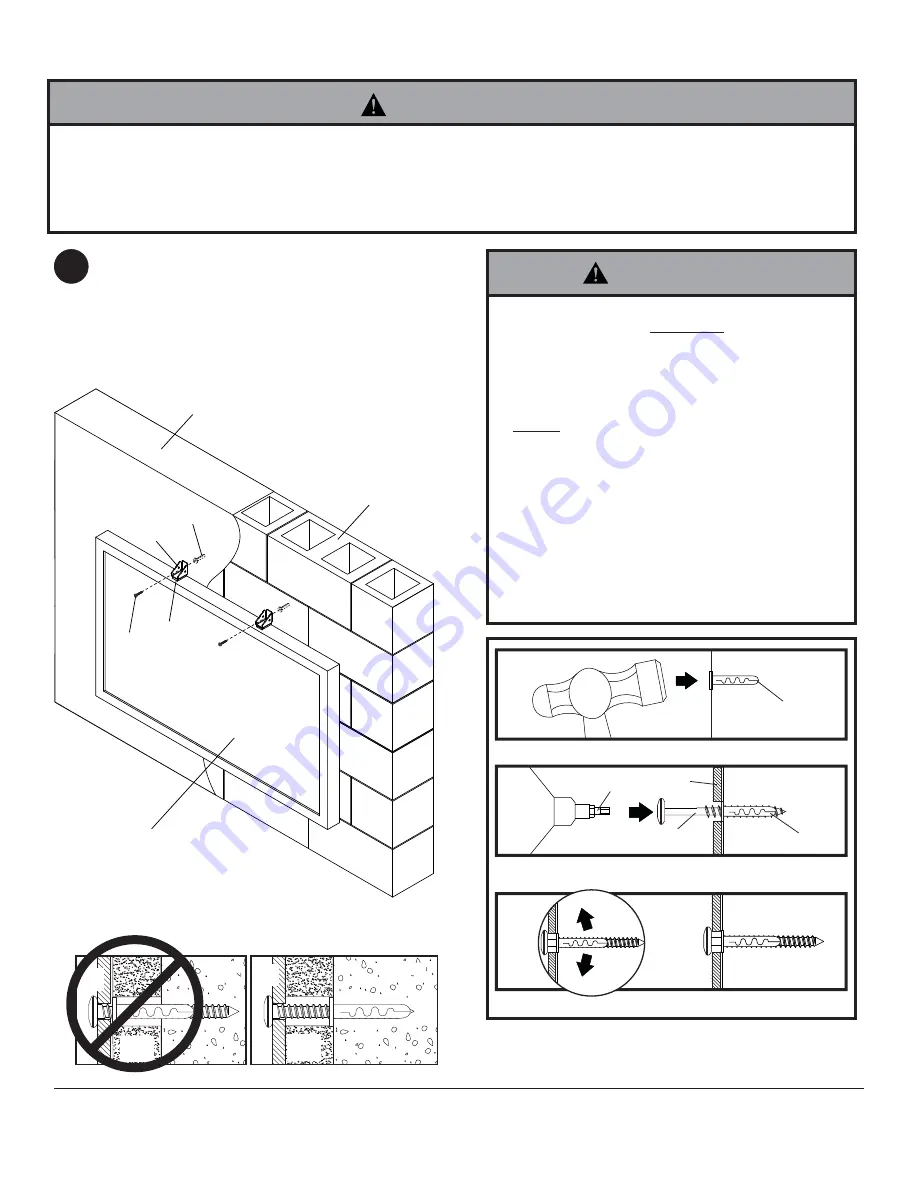
5 of 20
ISSUED: 04-05-11 SHEET #: 120-9105-1
Installation to Solid Concrete or Cinder Block
1
D
A
C
CUT
A
W
A
Y
VIEW
INCORRECT
CORRECT
wall
plate
wall
plate
plaster/
dry wall
plaster/
dry wall
concrete
concrete
Apply foam pad (
E
) to bottom of wall bracket (
A
).
Place wall bracket (
A
) on wall, resting on top of
display, and mark the center of mounting hole. Drill
a 1/4" (6mm) dia. hole to a minimum depth of 2".
Insert alligator anchor (
D
) into hole. Secure wall
bracket (
A
) to wall with security wood screw (
C
).
1
3
2
D
Drill holes and insert anchors (
D
).
Place plate (
A
) over anchors (
D
) and secure with screws (
C
).
Tighten all fasteners.
A
D
C
concrete
surface
• When installing Peerless wall mounts on cinder block, verify that you have a minimum of 1-3/8" (35 mm) of actual
concrete thickness in the hole to be used for the concrete anchors. Do not drill into mortar joints! Be sure to mount
in a solid part of the block, generally 1" (25 mm) minimum from the side of the block. Cinder block must meet ASTM
C-90 specifi cations. It is suggested that a standard electric drill on slow setting is used to drill the hole instead of a
hammer drill to avoid breaking out the back of the hole when entering a void or cavity.
WARNING
• Tighten screws so that wall plate is fi rmly
attached, but do not overtighten. Overtightening
can damage screws, greatly reducing their
holding power.
• Never tighten in excess of 80 in. • lb (9 N.M.).
• Always attach concrete expansion anchors
directly to load-bearing concrete.
• Never attach concrete expansion anchors
to concrete covered with plaster, drywall, or
other fi nishing material. If mounting to concrete
surfaces covered with a fi nishing surface is
unavoidable, the fi nishing surface must be
counterbored as shown below. Be sure concrete
anchors do not pull away from concrete when
tightening screws. If plaster/drywall is thicker
than 5/8" (16 mm), custom fasteners must be
supplied by installer.
WARNING
E
display
cinder block
solid concrete
G





































